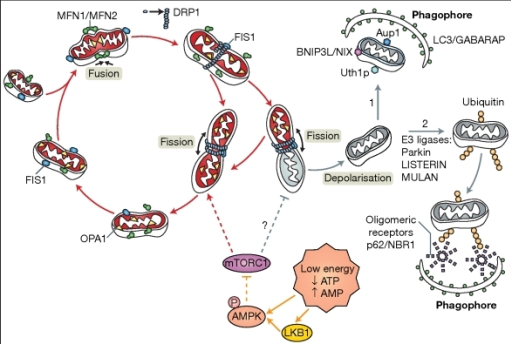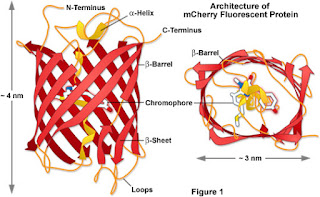Day 7: Splitting Cells
After incubating the cells over night, we had to see if they were confluent enough to split. We did this by simply looking down the microscope and observing them.
This is me observing the cells that we had incubated over night. Although there was not significant amount of confluence we still decided to work on the cells and split them to create a new passage.
What is a passage?
A passage is when cells from one culture is transferred into a fresh growth medium. This may also be referred to as subculturing or passaging the cells. The purpose of this process is that it has the purpose of expanding the number of cells or microorganisms in the culture. The cell line we worked with was passage 13, so once we split them they would have been called passage 14, meaning that we had to label up new flasks. We incubated them again so we could work on transfecting them for the next day...
At the same time:
Both MFN-1 and MFN-2 are important for mitochondrial fusion on the outer membrane whereas OPA1 dictates mitochondrial fusion on the inner membrane. Fusion is an important process for mitochondrial transport and localisation of neuronal processes. Mitofusin-2 has the role of being the receptor for the E3 ubiquitin ligase Parkin. Parkin translocates to the mitochondria and ubiquitinates mitofusin.
After incubating the cells over night, we had to see if they were confluent enough to split. We did this by simply looking down the microscope and observing them.
This is me observing the cells that we had incubated over night. Although there was not significant amount of confluence we still decided to work on the cells and split them to create a new passage.
What is a passage?
A passage is when cells from one culture is transferred into a fresh growth medium. This may also be referred to as subculturing or passaging the cells. The purpose of this process is that it has the purpose of expanding the number of cells or microorganisms in the culture. The cell line we worked with was passage 13, so once we split them they would have been called passage 14, meaning that we had to label up new flasks. We incubated them again so we could work on transfecting them for the next day...
At the same time:
We decided to run a western blot for Mitofusin-1 and Mitofusin-2. Mitofusin-1 is a protein that is encoded by a gene MFN-1, and Mitofusin-1 is a significant indictor of mitophagy and mitochondrial fusion. Mitofusin-2 is a protein that is encoded by the gene MFN-2. The mitofusins are GTPases which are localised in the outer membrane of the mitochondria.
Both MFN-1 and MFN-2 are important for mitochondrial fusion on the outer membrane whereas OPA1 dictates mitochondrial fusion on the inner membrane. Fusion is an important process for mitochondrial transport and localisation of neuronal processes. Mitofusin-2 has the role of being the receptor for the E3 ubiquitin ligase Parkin. Parkin translocates to the mitochondria and ubiquitinates mitofusin.





Comments
Post a Comment